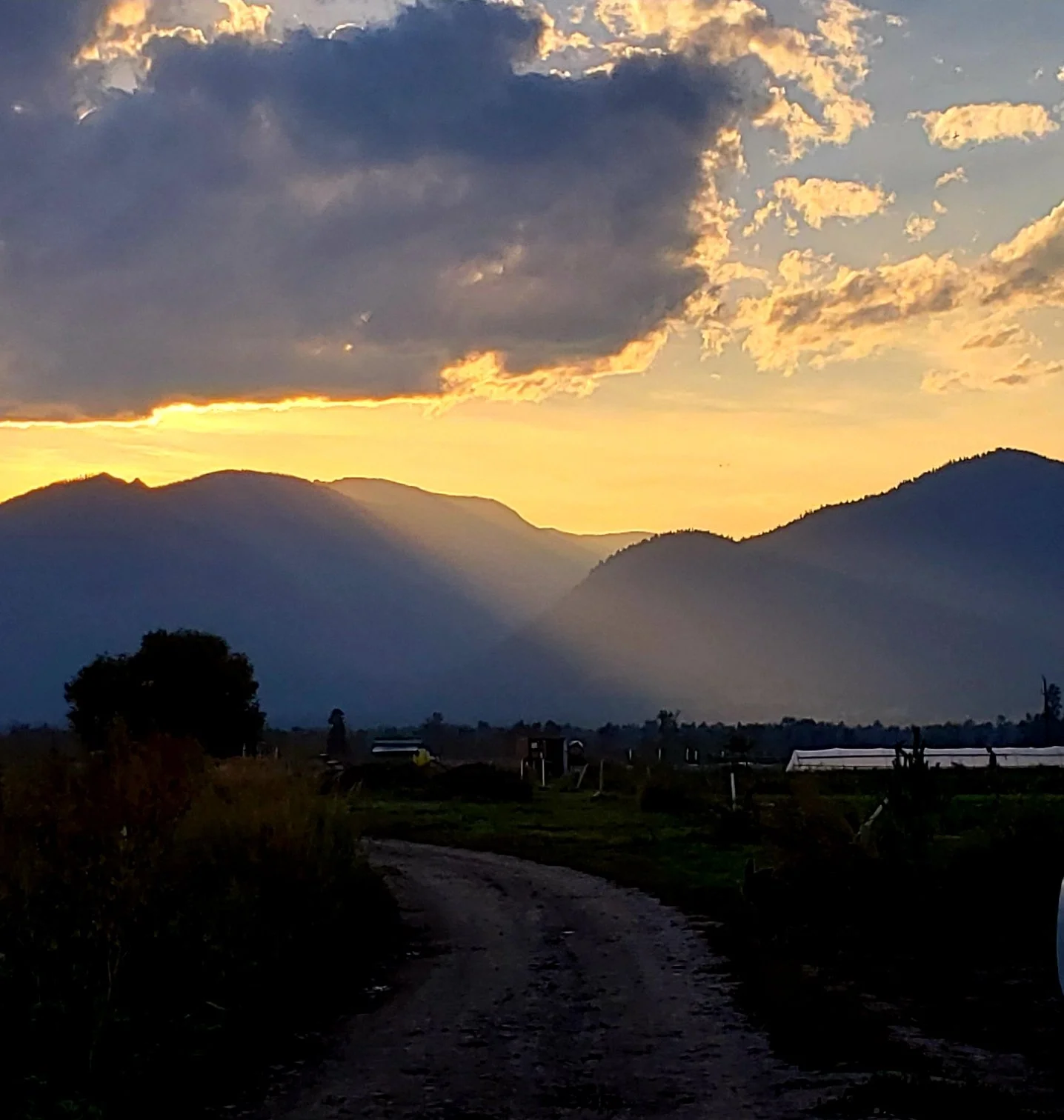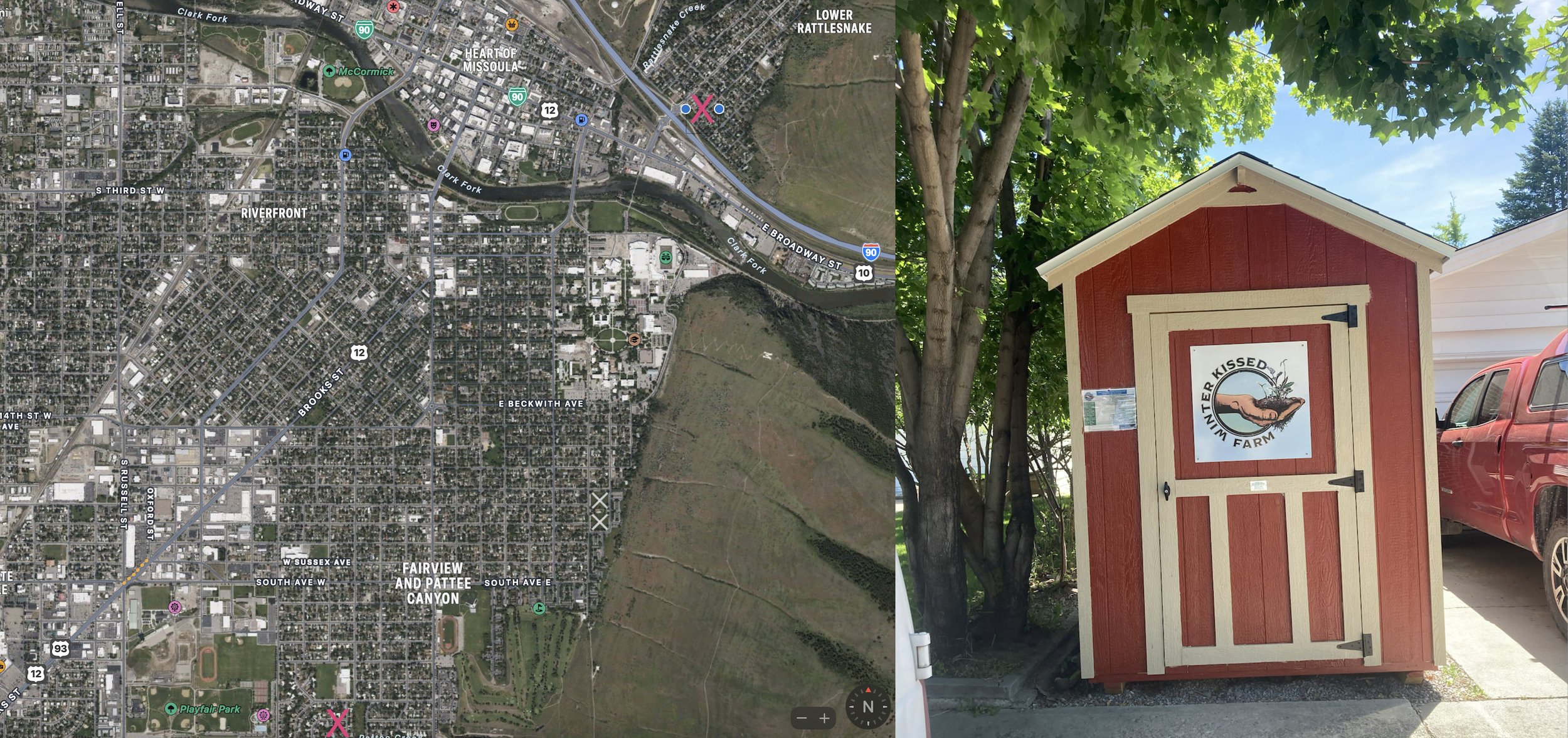“If I’m not a CSA member, can I shop on the online store?”
Yes! The online store is our farm’s version of a farmstand, allowing us to sell high-quality produce beyond what we’ve produced for the CSA boxes. It’s a place for everyone. Whether you’re the type of person who can’t eat an entire CSA share’s worth of food and want to shop a-la-carte. Or whether you missed the Saturday farmers market and need a mid-week local food option. Or whether you want to supplement your CSA share with even more veggies, fruit, ferments, and oat milk.
“Are you organic?”
Between solar energy production, feeding the soil with cover crops, spreading composted manure, managing weeds by hand and by tractor, and not spraying toxic chemicals, we go beyond the organic label.
“Are there more than root vegetables and squash in the Winter CSA?”
Yes, greens are our focus. And we grow 2-4 greens for every delivery. We have over an acre of greenhouses that are passively heated by the sun (not gas heaters) that protect fresh greens crops that we harvest each week of the Winter — spinach, bok choy, rainbow chard, mustard greens, claytonia (a mild lettuce-type green), and arugula.
“Is a Full Share too much food for me and my partner?”
The short answer is: “it could be!”
The long answer is: we have a host of solutions to make sure our CSA suits your needs and no food goes to waste.
Solution #1: You can pick up every other week by purchasing a Half Share option.
Solution #2: You can split the CSA box with a friend, neighbor, or family member. That way everyone gets an item they really enjoy and it’s not too much food for anyone. And if one person is out of town or busy, your fellow CSA member can pick up the box that week.
Solution #3: You can order food a-la-carte using the online store. You don’t need a CSA share to support our work and eat fresh all year-round. We list items every Friday and send out a reminder email to folks on our mailing list.
Solution #4: You can expand your cooking repertoire with this CSA. We send out recipes for each week of the growing season. Katie picks out recipes for several vegetables and links these recipes in the farm newsletter so that CSA members can make the most of their vegetables by trying new things.
“Where are the neighborhood coolers located?”
Click this link to find the Poplar Street Cooler (located in the alley behind 925 Poplar Street).
Click this link to find the King Street Cooler.
“I’m a half-share member. When do I pickup?”
Boy oh boy, do we have the calendars for you!
Click for Half share pickup calendar.
“Do I get to choose my CSA veggies?”
Yes, we offer many choices at pickup. We do this for two reasons;
-It’s not in our farm’s interest to grow food that isn’t used and goes to waste.
-Not every vegetable is right for every person. For example, not everyone likes the same potato variety. And not everyone savors beets.
So for 90% of the CSA deliveries, we provide choice items. This might be a choice between kohlrabi, potatoes, parsnips or beets. And it might be a greens choice — spinach or kale. Typically we provide a choice when there’s a particularly polarizing vegetable so that everyone finds something they can put to good use.
“How do you grow greens all Winter long in Montana?”
Katie trained on a farm in upstate New York that specialized in Winter growing. When she moved to Montana, she worked at a great farm in Arlee called Harlequin Produce whose owners provoked her to take up an independent project at the tail end of her first year apprenticing. She took up winter growing, trialing different methods and supplies to produce her first December-grown chard, kale, and spinach. She learned a ton and when joined Winter Kissed Farm in 2017, the farm began investing in the greenhouse infrastructure and fabric row cover materials needed to provide winter greens for farmers markets and CSA customers alike. At this point, we grow in nine large greenhouses and we set up smaller mobile greenhouse structures called “caterpillar” tunnels. It freezes in these spaces every single night. But the early Fall exposure to temperatures in the teens allows the plants to develop a tolerance to frost. And we layer different thicknesses of fabric row cover atop plants when single-digit and negative temperatures arrive in December, January, and February.
Some varieties fair better than others, but we always deliver between 2-3 fresh greens for each week of the Winter CSA. These greens end up tasting better than anything you can find at the grocery store. And our spinach lasts between 2-4 weeks in the fridge because we harvest every leaf by hand, ensuring these crops are high quality.
“How do I break my CSA box down so it can be reused?”
Here’s a video Katie made to show the steps. It’s not the easiest process so we wanted to illustrate the steps:


